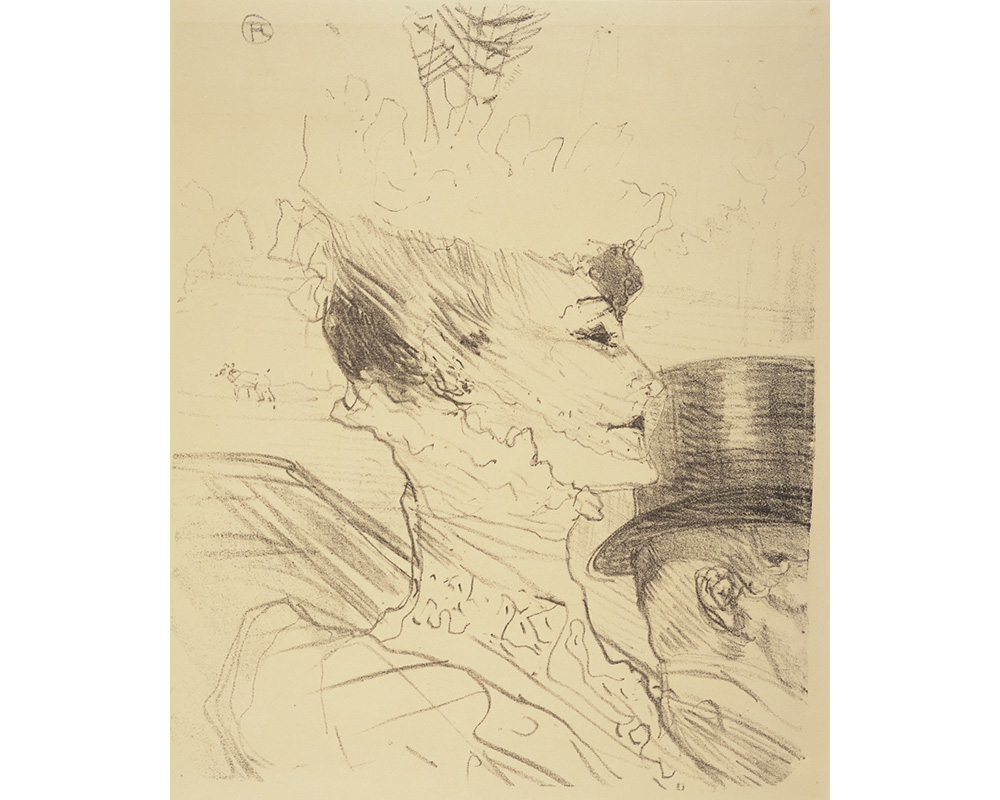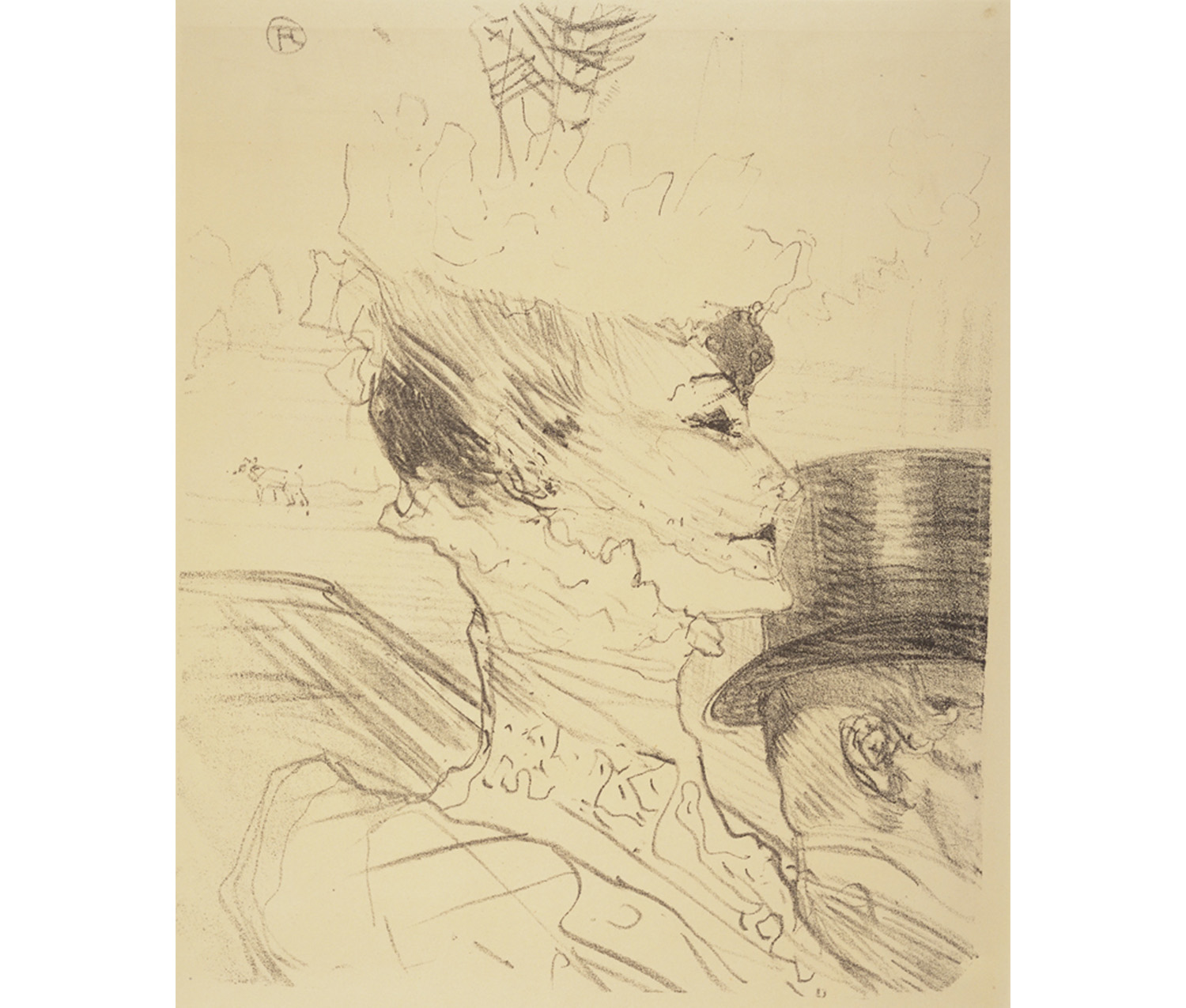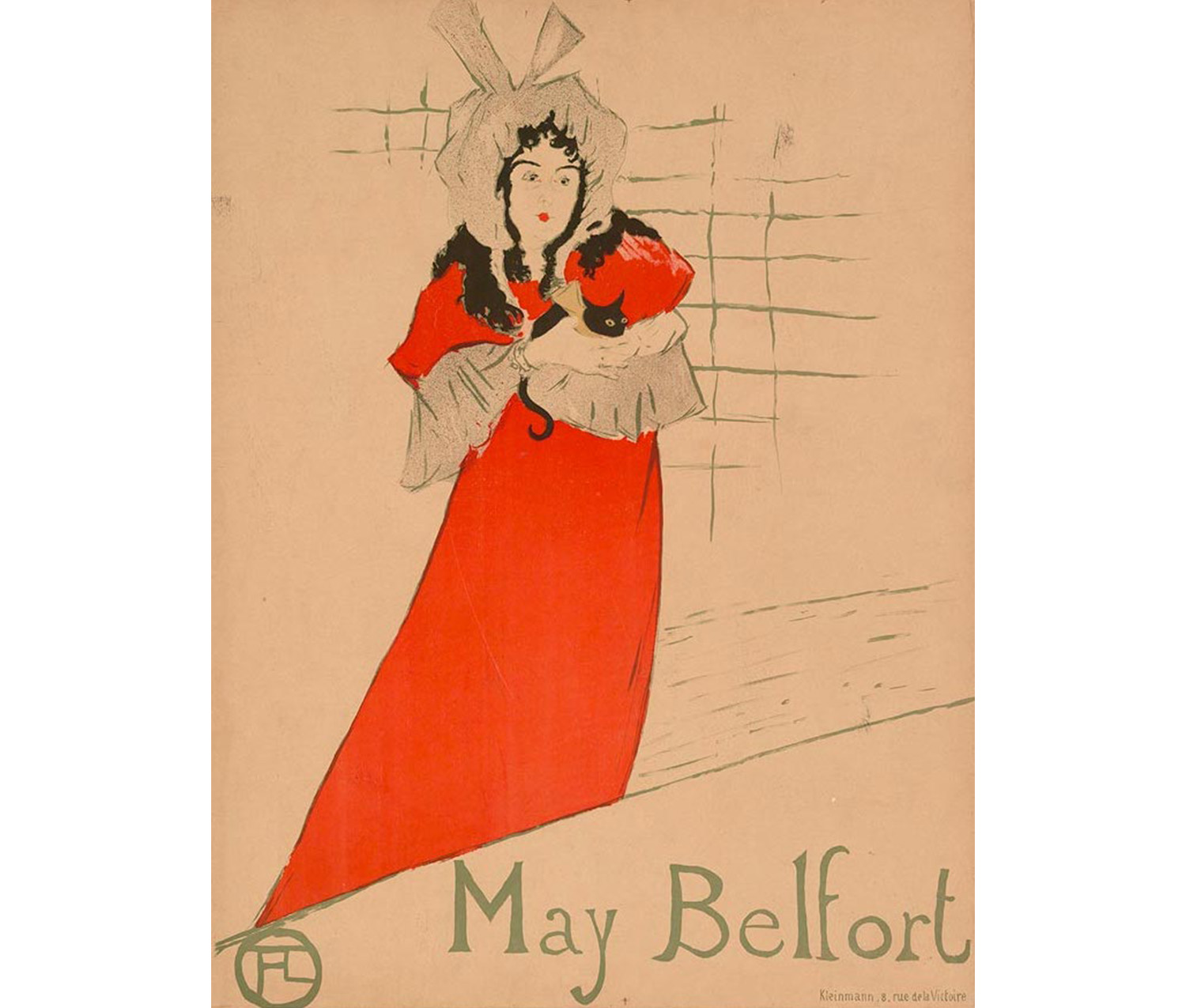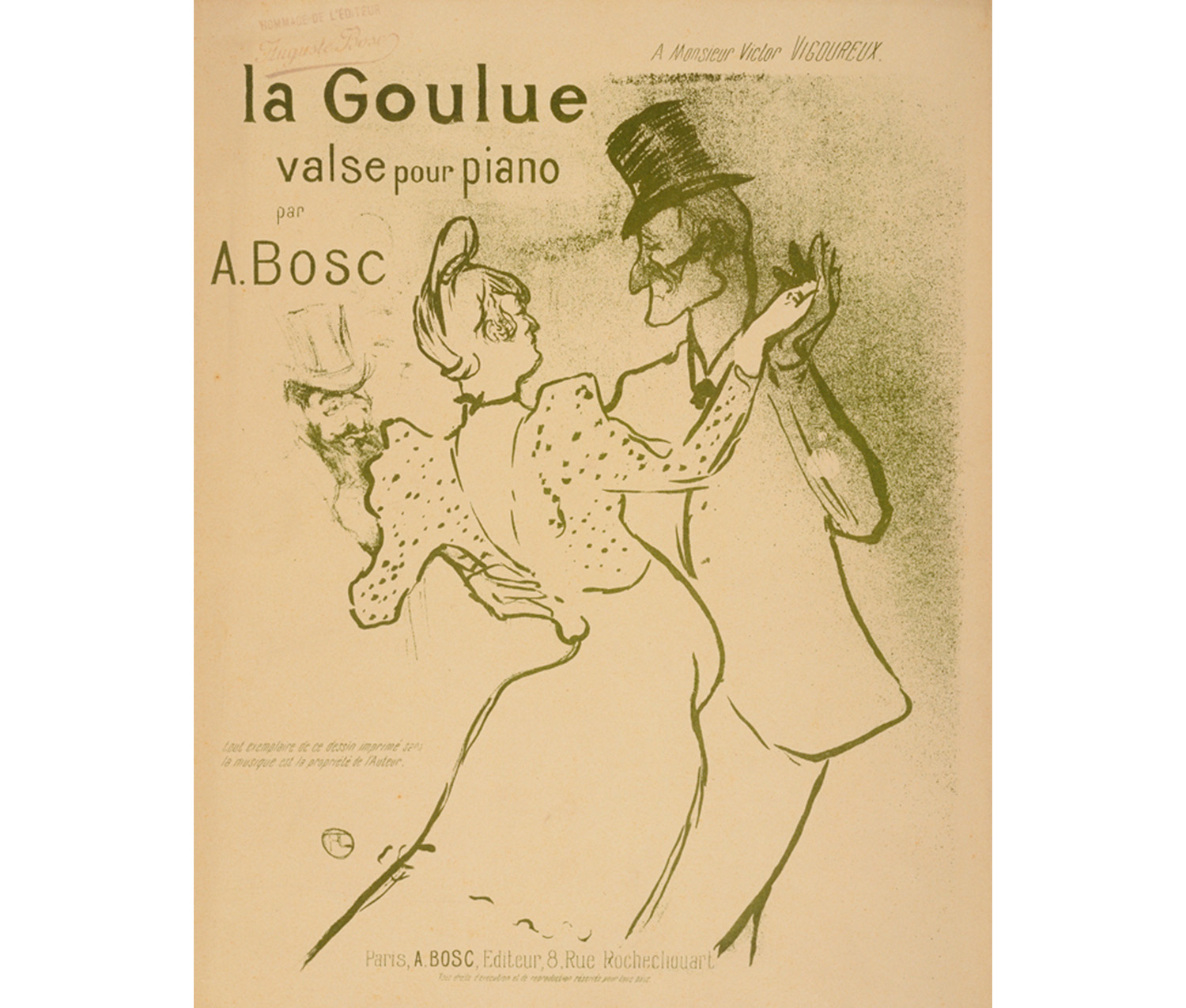
Toulouse-Lautrec and Parisian Nightlife
Guest blogger Raphaela Tayvah '16 was a Smith College student, class of 2016, with a major in Art History and a Museums Concentration. She was a Student Assistant in the Cunningham Center for the Study of Prints, Drawings, and Photographs.
Nightclub singers and performers were a favorite subject for Henri de Toulouse-Lautrec. Born to a wealthy, artistically inclined family in 1864, Toulouse-Lautrec is known for his vibrant, theatrical depictions of turn of the century Parisian life and the characters that made it so vivid. Many of these characters were the singers and dancers of nightclubs such as the Moulin Rouge. Toulouse-Lautrec worked in a variety of media, experimenting in everything from watercolors and stained glass to prints and posters. The last of these are what he is probably best known for. These prints and posters were not only revolutionary in respect to their technique but they also formed an important early bridge between so-called high art and the commodity. They were often used to advertise events at what were thought of as low-brow establishments. In doing so, Toulouse-Lautrec’s works exemplify the early shift of art from an elitist context to one more accessible to the general public.
The women depicted in Toulouse-Lautrec’s prints and posters were not only icons of this world of flashy nightlife, but also all had their own distinct personas. Three of these, Yvette Guilbert, Mary Belfort, and Louise Weber (more commonly known as La Goulue), can be seen in the collection at the Cunningham Center.

Toulouse-Lautrec, Henri de. French, 1864–1901. Yvette Guilbert, ca. 1913. Crayon lithograph printed in black with scraper on ochre wove paper. Purchased. SC 1958.72.
The first of these depicts Yvette Guilbert, a singer from an impoverished background who eventually made her way to the stage at the Moulin Rouge. She was a favorite subject of Toulouse-Lautrec. He did many portraits and caricatures of her throughout his career, even dedicating his second album of sketches to Guilbert. This print expresses the more nuanced aspects of the singer. With the gestural lines and lack of color, this print distinguishes itself from much of Toulouse-Lautrec’s more flashy, theatrical work.

Toulouse-Lautrec, Henri de. French, 1864–1901. May Belfort, ca. 1895. Crayon, brush and spatter lithograph printed in olive green, red, black and yellow on wove paper on fabric. Purchased. SC 1958.82.
Toulouse-Lautrec’s May Belfort shows another depiction of a Parisian nightclub singer. Belfort was an Englishwoman who moved to Paris to pursue her career as a performer. She is often depicted with a black cat, seen here curled up in her arms. Throughout Toulouse-Lautrec’s work he often highlights specific characteristics or objects associated with his subjects. This practice allowed him to establish personas around these people, which was especially useful when creating promotional posters.

Toulouse-Lautrec, Henri de. French, 1864–1901. La Goulue, ca. 1894. Brush, crayon and spatter lithograph printed in dark olive green with scraper on ochre wove paper. Purchased. SC 1958.78.
The third and final of Toulouse-Lautrec’s women under discussion here is La Goulue. This gestural work depicts one of the Moulin Rouge’s best known performers. A dancer and part-time prostitute, Louise Weber earned the nickname “La Goulue” due to her gluttonous personality. Roughly six feet tall, she was known for her impressive appetite. Weber was a common subject for Toulouse-Lautrec, and he did numerous promotional posters of the dancer. The lack of color in this particular print combined with strong lines manages to convey her vibrant, flirtatious persona without overwhelming the viewer and turning her into too much of a caricature.
The three of these prints show different facets of Toulouse-Lautrec’s nightclub performers. Each of the women he chose to portray give a sense of his ability to capture personality in slightly abstracted depictions of the human form. In addition, these prints serve as an excellent reminder that much of the work that is associated with Toulouse-Lautrec’s name today were created with the intention of function as advertisements for various night clubs. In doing so, he began to bridge the gap between high art and functional object.